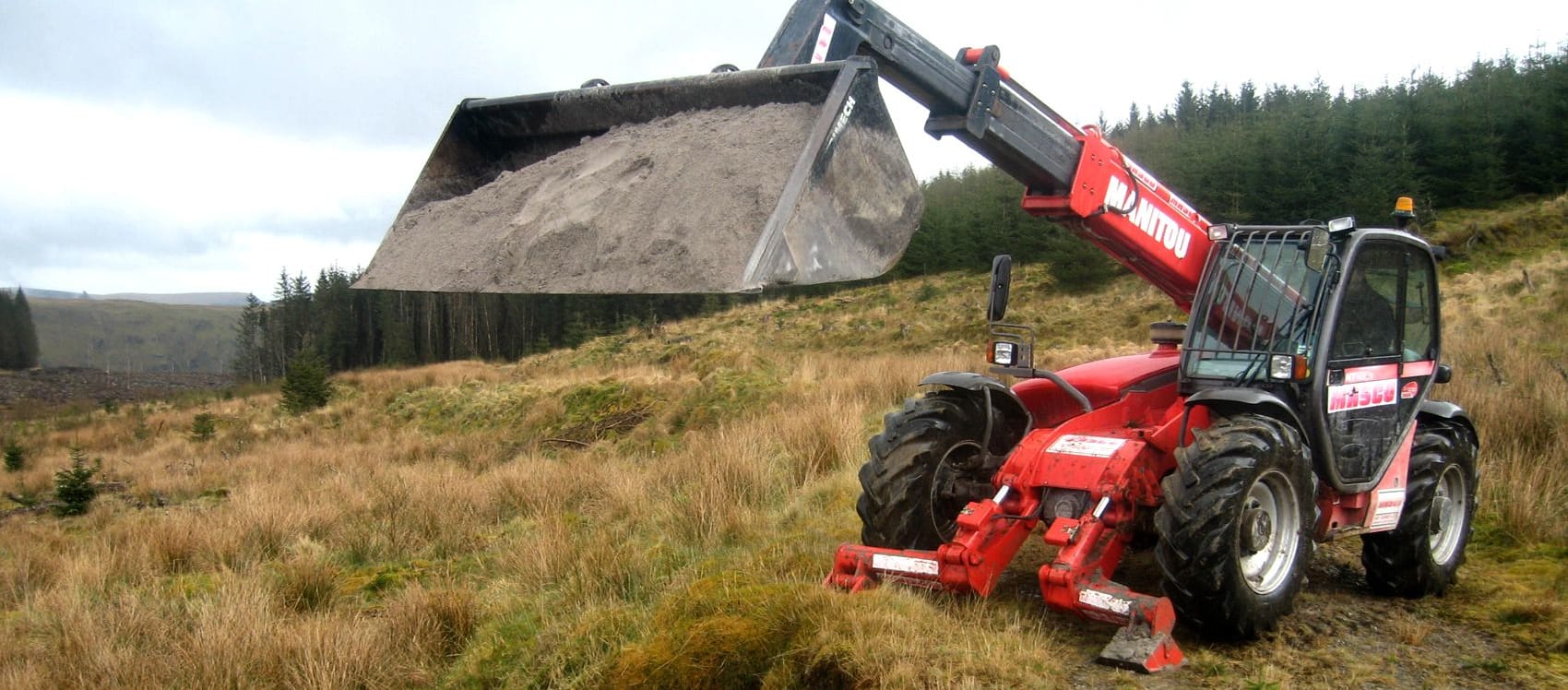
Since 2003 the Foundation has been working to correct the damaging effects of acidity in the upper Wye and Irfon catchments. Fortunately, the Usk catchment lies outside the affected geology. For more details on acidity and how it affects rivers, please see here.
In 2002 a Government funded scoping study estimated that 62km of the upper Wye and Irfon plus their tributaries were significantly affected by acidification. The neighbouring Tywi also had some 33km acidified and it was on this river that work had previously taken place to determine the most effective solution.
Putting limestone powder in bogs at the very source of streams (hydrological source liming) was not only effective at neutralising acidity but also long lasting. These wet areas are the uppermost starting point of a stream and, typically, half a hectare of ground or more that remains wet all year. What wasn’t successful was whole catchment liming or removal of the conifers on a catchment scale.
Armed with this knowledge, WUF teamed up with partners from Cardiff University, (Prof. Steve Ormerod) and Dr. Ingrid Juettner from the National Museum of Wales to apply what had been learned in the Tywi firstly to the upper Wye and later, the Irfon catchment. The project was funded from the EU’s Regional Development Fund, Environment Agency Wales and Wye riparian owners. Tarmac supplied finely crushed lime and a lightweight track laying vehicle to apply it.
Initial attempts were met with mixed success. Hours were often spent hauling out the sunken machine from the wetlands. Enough sites were covered to make some assessment of efficacy, however, and Dr Juettner monitored pH, diatom communities and water chemistry.
Diatom investigation showed whether there was any long term stability of pH levels, rather than the huge acidic flushes that were experienced pre-treatment. The problem was that there simply weren’t enough bogs left to introduce the required amount of calcium: the nature of commercial plantation forestry had resulted in extensive draining of virtually all of the former wetland areas, especially in the Irfon. Not only did this increase the “flashiness” of flows but also the drop in pH events were greatly enhanced.
We therefore tried another method of introducing limestone to the catchment: direct dosing of random sand-sized particles to what are termed “first order streams” (those that have no tributaries). Annual dosing had proved successful in North America. A single monitored site – “Site 56” – was chosen to replicate the New World work and a tonne of sand lime was applied. Initial results were very encouraging and further monitoring proved its sustainability, provided dosing was repeated annually.
Plans were made to extend this across the rest of the upper Wye catchment and in our next project in the Irfon.
This time an EU funded Life + scheme, ISAC, was set up to sort out acidification (as well as other issues) which had only partly been resolved with source liming and also to deal with the fast run-off from the commercial plantations. We blocked off the forestry drainage system of these areas and expanded our sand liming, even recovering old tracks to ensure an even distribution. Again, monitoring of diatoms enabled the correct dose to be applied. The monitoring plan also included sampling fish populations and was carried out by Environment Agency Wales (now National Resources Wales).
In November 2020, peer-reviewed scientific research was published following research on the results of our liming work in the upper Wye and Irfon:
Wye & Usk Foundation news item on the research and its findings
For an example of the electrofishing results of the liming programme, please see here.
The principal benefit of this work is the increasingly healthy run of our large 3 sea winter salmon spawning again and the formerly barren upper Wye and Irfon now holding good densities of juvenile fish (both salmon and trout) plus a more appropriate invertebrate community.
Otters and dippers have also returned. Catch returns from anglers show that other fish species, such as grayling, are once again in good numbers in the upper reaches of the Irfon.
Both the upper Wye and Irfon need re-dosing every mid-April at a cost of around £10,000. It is vital for the health of the Wye catchment as a whole that this work continues. Please help us to do so via the Support Us section.
We are extremely grateful to the large number of partners that have helped us in this area of our work, including: Natural Resources Wales (and their predecessors), EU Life+ Fund, National Museum for Wales, University of Wales, Centre for Ecology & Hydrology, Tarmac and Wye riparian owners.
Share this page
The Wye and Usk Foundation
The Right Bank, The Square
Talgarth
Brecon
LD3 0BW
The Wye & Usk Foundation is a charity registered in England and Wales (no. 1080319).